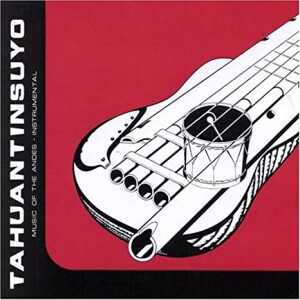 Many residents of the Northern Hemisphere first heard the music of the Andes as performed by the group Urubamba, which played on two tracks of Simon and Garfunkle’s last studio album, Bridge Over Troubled Water. Both “Cecilia” and “El Condor Pasa” included the exotic sounds of Andean string and wind instruments, and the former also featured the primal rhythms of the Andean skin drums.
Many residents of the Northern Hemisphere first heard the music of the Andes as performed by the group Urubamba, which played on two tracks of Simon and Garfunkle’s last studio album, Bridge Over Troubled Water. Both “Cecilia” and “El Condor Pasa” included the exotic sounds of Andean string and wind instruments, and the former also featured the primal rhythms of the Andean skin drums.
I’ve been a casual fan of the genre ever since. I bought and enjoyed Urubamba’s U.S. debut (produced by Simon) in the early Seventies, and I’ve attended performances by Andean groups, including the internationally acclaimed Sukai, numerous groups at folk festivals in the Pacific Northwest, and some expatriat bands that now live permanently in the U.S.
This CD by musicians from Peru, Ecuador and Argentina holds its own with the best that I’ve heard.
The trio Tahuantinsuyo, which translates as “The Four Corners of the World,” recorded these tracks in 1978. It is apparently a compilation of at least two different sessions; about half of the 12 tracks are straight studio recordings, and the other half include vocal and percussion contributions from several people in the background.
This recording, digitally remastered for CD, has gorgeously clear sound — it’s hard to believe that the originals were recorded in 1978.
The music alternates between slow and fast pieces, and includes tunes from Peru, Ecuador, Bolivia and Argentina. Instruments include the charango, a small mandolin-like instrument whose body is an armadillo’s shell; several varieties of flute and pan-pipes; skin and wooden drums; and standard guitars.
The Argentine pieces show the most Spanish influence, sounding at times like flamenco, at times very much like Baroque contrapuntal melodies. One in particular, “Tierra y Aire” (“Land and Air”), features beautiful and delicate guitar work that represents the land, and haunting flutes for the air.
The music ranges from uptempo dances to slow laments. Throughout, the performances are first-class. This is very dynamic music with a lot of interplay between rhythm, melody and harmony, filled with exotic textures and colors.
The liner notes are spare but excellent, explaining the different instruments, detailing which instruments are used in each track, and giving short biographies of the musicians.
Altogether, Music of the Andes is an exceptional CD, well worth tracking down for anyone who enjoys Andean instrumental music. You can still find it on the Adelphi website and also on Amazon.
(Genes Records, 1995; original LP Adelphi, 1978)
